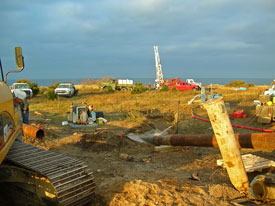
The ROD explains how clean-up will be addressed and which alternatives will be used. It covers all of the following information:
- Site history.
- Site description.
- Site characteristics.
- Community participation in the investigative process.
- Enforcement activities.
- Past and present activities.
- Identification of contaminated media.
- Specific contaminants present.
- The range and role of response actions.
- Remedial technologies and methodologies selected.
The Record of Decision is a public document and serves as an overarching compendium of each Superfund site’s clean-up process from the beginning. Therefore, in an effort to draw attention to the importance of documentation quality, an ROD of the Year Contest is held annually. Samples of well-written RODs can be found on the contest website.
Once the Record of Decision is completed, the remedial design and remedial action (RD/RA) phase begins, beginning implementation of the clean-up process.
You can access the Environmental Protection Agency’s Record of Decision System to learn about any Superfund site in the US. This searchable library contains a complete text version of each Record of Decision plus an abstract, any Record of Decision Amendments (AMDs) and Explanations of Significant Differences (ESDs).
